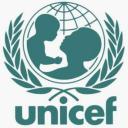 Every year, three million girls and women are subjected to genital mutilation/cutting, a dangerous and potentially life-threatening procedure that causes unspeakable pain and suffering. This practice violates girls’ and women’s basic human rights, denying them of their physical and mental integrity, their right to freedom from violence and discrimination, and in the most extreme case, of their life.
Every year, three million girls and women are subjected to genital mutilation/cutting, a dangerous and potentially life-threatening procedure that causes unspeakable pain and suffering. This practice violates girls’ and women’s basic human rights, denying them of their physical and mental integrity, their right to freedom from violence and discrimination, and in the most extreme case, of their life.
Female genital mutilation/cutting (FGM/C) is a global concern. Not only is it practiced among communities in Africa and the Middle East, but also in immigrant communities throughout the world. Moreover, recent data reveal that it occurs on a much larger scale than previously thought. It continues to be one of the most persistent, pervasive and silently endured human rights violations.
[youtube]V9DzLujRIro[/youtube]
This Innocenti Digest examines the social dynamics of FGM/C. In communities where it is practiced, FGM/C is an important part of girls’ and women’s cultural gender identity. The procedure imparts a sense of pride, of coming of age and a feeling of community membership. Moreover, not conforming to the practice stigmatizes and isolates girls and their families, resulting in the loss of their social status. This deeply entrenched social convention is so powerful that parents are willing to have their daughters cut because they want the best for their children and because of social pressure within their community. The social expectations surrounding FGM/C represent a major obstacle to families who might otherwise wish to abandon the practice.
Taking this as its point of departure, the Digest presents some of the most promising strategies to support communities to abandon FGM/C. These approaches recognize that the decision to abandon the practice must come from communities themselves, and must reflect a collective choice, reinforced publicly and grounded on a firm human rights foundation. Greater nderstanding of human rights provides communities with the tools to direct their own social transformation. The explicitly collective dimension empowers individual families, while liberating them from having to make the difficult choice of breaking with tradition.
This Innocenti Digest is a contribution to a growing movement to end the practice of FGM/C around the world. As early as 1952, the UN Commission on Human Rights adopted a resolution on the issue. The 1979 Convention on the Elimination of All Forms of Discrimination Against Women was an important milestone in recognizing the human rights implications of FGM/C. With the 1989 Convention on the Rights of the Child, the procedure has been identified as both a harmful traditional practice that compromises a child’s right to the highest attainable standard of health and a form of violence. The issue has received consistent attention from the Committee on the Rights of the Child and from other treaty bodies and human rights mechanisms.
International commitment to address FGM/C continues to grow. The Millennium Development Goals establish measurable targets and indicators of development that are of direct relevance to ending FGM/C – namely to promote gender equality and empower women, to reduce child mortality and to improve maternal health. A World Fit for Children, the outcome document of the 2002 UN General Assembly Special Session for Children, explicitly calls for an end to “harmful traditional or customary practices, such as early and forced marriage and female genital mutilation”. Some countries may be able to achieve this target if adequate resources are provided, while others can make significant advances towards that aim. The current UN Special Studies in Violence against Children and Violence Against Women offer new and important opportunities to draw attention to the issue and generate action to transform this goal into a reality.
Never before has the global community had such a refined understanding of why FGM/C persists and encouraging evidence from innovative programmes. There is good reason to be optimistic that by applying this knowledge, FGM/C can become unacceptable from any point of view and in any form, and that the practice can be ended within a single generation.
Marta Santos Pais
Director Innocenti Research Centre
You can read the entire UNICEF report on this terrible practice here (PDF).
UNICEF is a special U.N. program devoted to the health, nutrition, education, and general welfare of children. It originally provided relief to children in need following World War II. After 1950 its efforts turned to general programs for improvement of children’s welfare. It was awarded the Nobel Peace Prize in 1965. Much of its work has been in fields where small expenditures bring large returns, incl. health care, education, and surplus-food distribution. It is based in New York. It receives over 60% of its funds from governments and the rest through fundraising and card sales.

